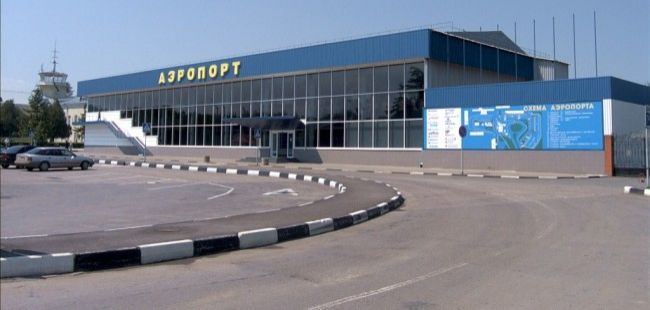
No More International Flights From Russian-Occupied Crimea
Publication: Eurasia Daily Monitor Volume: 11 Issue: 172
By:

As a result of the confluence of two developments, one welcome and encouraging and the other dangerous and worrisome, the airline that had maintained a route between Simerfopol (the capital of Crimea) and Turkey is ending that service. Andrey Sokolov, the Russian deputy minister for occupied Crimea announced on September 27 that he was “not prepared to say what the cause was.” But the reason for the termination of this flight connection was fairly obvious both to the residents of Crimea and to any outside observers who care to examine the situation, Sokolov concluded (korrespondent.net), September 27).
On the one hand, it reflects the impact of the International Civil Aeronautics Organization’s (ICAO) decision after the Crimean annexation to no longer certify international flights to, from or over Crimea as protected by international law. That did not constitute a ban as some agencies have reported. Rather, it means that no carrier can collect on its insurance in the event of an accident in Crimea, a risk that few airlines are prepared to bear.
The ICAO decision ended all flights from March to July 19. At that point, the airline Grozny Avia began flying from Simferopol to Istanbul. But now, its managers have decided to suspend Grozny Avia’s flights as well. The decision leaves the Crimean airport without any international connections, further isolating the Crimean Tatars from Turkey and limiting the ability of native Crimeans to maintain themselves against Russian forces there.
But the second—and certainly more important—reason for the suspension of international flights to and from Crimea reflects a concerted Moscow policy. Specifically, the government is trying to restrict the number of airports in the Russian Federation (and in areas occupied by it) with direct flights to foreign cities. Instead, such links will now need to be redirected to Moscow or St. Petersburg, so that anyone travelling to anywhere inside Russia will first have to go through one or the other of the two Russian capitals.
That was the pattern in Soviet times, but it broke down in the 1990s with the formation of the so-called “baby Aeroflot” regional carriers and the desire of regional officials and businesses to gain direct access to foreign countries and to other regions inside Russia without having to go through Moscow. By the mid-1990s, perhaps as many as 50 Russian airfields were “international” in the sense of having at least one flight a week to places beyond the borders of the Russian Federation. But now there are only 19—and approximately half of them have flights only to what Moscow calls “the near abroad,” the former Soviet republics (mapsofworld.com, accessed September 30).
This recentralization of flight paths gives the Russian government much greater control over the regions, but it has been accompanied by a still more draconian and ultimately economically counter-productive return to the past: a dramatic reduction in the number of flights among regional centers as well. That means that it is often necessary for people in one region to fly to Moscow and then fly back to a neighboring region rather than be able to fly direct. Such an arrangement is not only expensive, but also time-consuming and keeps the regions from working with one another. According to Vadim Shtepa, Russia’s leading specialist on regionalism, Russian air service is now more Moscow-centric than it was in Soviet times, which he argues is holding the country back (spektr.delfi.lv, September 26).
Now, that Moscow-centric approach is being imposed on Russian-occupied Crimea. According to the Simferopol airport website, which still calls itself “an international airport,” most flights go to and from Moscow, with a far lesser number going to St. Petersburg, Samara, Rostov and, most infrequently of all, Krasnodar (airport.crimea.ua, accessed Septmeber 26). That, in turn, means that anyone flying from Crimea who wants to go to the nearby North Caucasus or to the countries of the South Caucasus usually must fly through Moscow, a route that adds many hours and costs far more than more direct links would.
Theoretically, the ICAO restrictions would not apply were Simferopol to begin flights to Ukraine, which Crimea’s rulers define as a foreign country. But as long as the Russian intervention continues there, the prospects of such air connections with the Ukrainian mainland remain particularly remote. Consequently, in the air—as already on the ground and on the sea—Crimea is increasingly cut off from the rest of the world. This arrangement allows the Russian occupiers the opportunity to do what they want without many foreign visitors coming to watch them and without many Crimeans having the chance to go abroad and tell the world what the Russians are doing.




